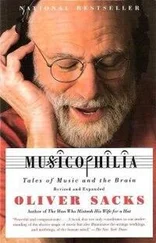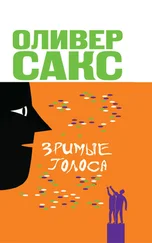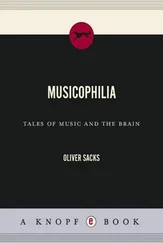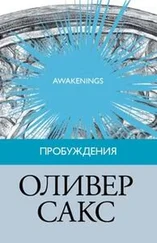Lavoisier had left a ghost of phlogiston in his conception of heat or ‘caloric’ as an element, and in his first, seminal experiment, Davy melted ice by friction, thus showing that heat was motion, a form of energy, and not a material substance, as Lavoisier had thought. ‘The non-existence of caloric, or the fluid of heat, has been proved’, Davy exulted. He set forth the results of his experiments in a long ‘Essay on Heat and Light’, a critique of Lavoisier as well as a vision of a new chemistry that he hoped to found, one finally purged of all the remnants of alchemy and metaphysics.
When news of the young man, of his intellect and perhaps revolutionary new thoughts about matter and energy, reached the chemist Thomas Beddoes, he published Davy’s essay, and invited him to his laboratory, the Pneumatic Institute in Bristol. Here Davy analyzed the oxides of nitrogen (which had first been isolated by Priestley) – nitrous oxide (N 2), nitric oxide (NO), and the poisonous, brown ‘peroxide’ of nitrogen (N0 2) – made a detailed comparison of their properties, and wrote a wonderful account of the effects of inhaling the fumes of nitrous oxide, ‘laughing gas.’ Davy’s description of inhaling nitrous oxide, in its psychological perspicacity, is reminiscent of William James’s own account of the same experience a century later, and it is perhaps the first description of a psychedelic experience in Western literature:
A thrilling extending from the chest to the extremities was almost immediately produced… my visible impressions were dazzling and apparently magnified, I heard distinctly every sound in the room… As the pleasurable sensations increased, I lost all connection with external things; trains of vivid visible images passed through my mind and were connected with words in such a manner, as to produce perceptions perfectly novel. I existed in a world of newly connected and newly modified ideas. I theorised; I imagined that I made discoveries.
Davy also discovered that nitrous oxide was an anesthetic, and suggested its use in surgical operations. (He never followed up on this, and general anesthesia was only introduced in the 1840 s, after his death.)
In 1800 Davy read Alessandro Volta’s paper describing the first battery, his ‘pile’ – a sandwich of two different metals with brine-dampened cardboard in between – which generated a steady electric current. Although static electricity, as lightning or sparks, had been explored in the previous century, no sustained electrical current was obtainable until now. Volta’s paper, Davy was later to write, acted like an alarm bell among the experimenters of Europe, and, for Davy, suddenly gave form to what he now saw as his life’s work.
He persuaded Beddoes to build a massive electric battery – it consisted of a hundred six-inch-square double plates of copper and zinc, and occupied an entire room – and started his first experiments with it a few months after Volta’s paper. He suspected almost at once that the electric current was generated by chemical changes in the metal plates and wondered if the reverse was also true – whether one might induce chemical changes by the passage of an electric current.
Water could be created (as Cavendish had shown) by sparking hydrogen and oxygen together. [20]Could one now, with the new power of electric current, do the opposite? In his very first electrochemical experiment, passing an electric current through water (he had to add a little acid to render it conducting), Davy showed that it could be decomposed into its constituent elements, hydrogen appearing at one pole or electrode of the battery, and oxygen at the other – though it was only several years later that he was able to show that they appeared in fixed and exact proportions.
With his battery, Davy found, he could not only electrolyze water, but heat metallic wires: a platinum wire, for example, could be heated to incandescence; and if the current was passed into rods of carbon, and these were then separated by a short distance, a dazzling electric ‘arc’ would leap out and bridge them (‘an arc so vivid’, he wrote, ‘that even the sunlight compared with it appeared feeble’). Thus, almost casually, Davy hit upon what were to become two major forms of electrical illumination, incandescence and arc lighting – though he did not develop these, but went on to other things. [21]
* * *
Lavoisier, making his list of elements in 1789, had included the ‘alkaline earths’ (magnesia, lime, and baryta) because he felt they contained new elements – and to these Davy added the alkalis (soda and potash), for these, he suspected, contained new elements too. But there were as yet no chemical means sufficient to isolate them. Could the radically new power of electricity, Davy wondered, succeed here where ordinary chemistry had failed? First he attacked the alkalis, and early in 1807 performed the famous experiments that isolated metallic potassium and sodium by electric current. When this occurred, Davy was so ecstatic, his lab assistant recorded, that he danced with joy around the lab. [22]
One of my greatest delights was to repeat Davy’s original experiments in my own lab, and I so identified with him that I could almost feel I was discovering these elements myself. Having read how he first discovered potassium, and how it reacted with water, I diced a little pellet of it (it cut like butter, and the cut surface glittered a brilliant silver-white – but only for an instant; it tarnished at once). I lowered it gently into a trough full of water and stood back – hardly fast enough, for the potassium caught fire instantly, melted, and as a frenzied molten blob rushed round and round in the trough, with a violet flame above it, spitting and crackling loudly as it threw off incandescent fragments in all directions. In a few seconds the little globule had burned itself out, and tranquillity settled again over the water in the trough. But now the water felt warm, and soapy; it had become a solution of caustic potash, and being alkaline, it turned a piece of litmus paper blue.
Sodium was much cheaper and not quite as violent as potassium, so I decided to look at its action outdoors. I obtained a good-sized lump of it – about three pounds – and made an excursion to the Highgate Ponds in Hampstead Heath with my two closest friends, Eric and Jonathan. When we arrived, we climbed up a little bridge, and then I pulled the sodium out of its oil with tongs and flung it into the water beneath. It took fire instantly and sped around and around on the surface like a demented meteor, with a huge sheet of yellow flame above it. We all exulted – this was chemistry with a vengeance!
There were other members of the alkali metal family even more reactive than sodium and potassium, metals like rubidium and cesium (there was also the lightest and least reactive, lithium). It was fascinating to compare the reactions of all five by putting small lumps of each into water. One had to do this gingerly, with tongs, and to equip oneself and one’s guests with goggles: lithium would move about the surface of the water sedately, reacting with it, emitting hydrogen, until it was all gone; a lump of sodium would move around the surface with an angry buzz, but would not catch fire if a small lump was used; potassium, in contrast, would catch fire the instant it hit the water, burning with a pale mauve flame and shooting globules of itself everywhere; rubidium was still more reactive, spluttering violently with a reddish violet flame; and cesium, I found, exploded when it hit the water, shattering its glass container. One never forgot the properties of the alkali metals after this.
Before Humphry Davy’s discovery of sodium and potassium, metals were thought of as hard and dense and infusible, and here were ones as soft as butter, lighter than water, very easily melted, and with a chemical violence, an avidity to combine beyond anything ever seen. (Davy was so startled by the inflammability of sodium and potassium, and their ability to float on water, that he wondered whether there might not be deposits of these beneath the earth’s crust, which, exploding upon the impact of water, were responsible for volcanic eruptions.) Could the alkali metals, indeed, be seen as true metals? Davy addressed this question just two months later:
Читать дальше












